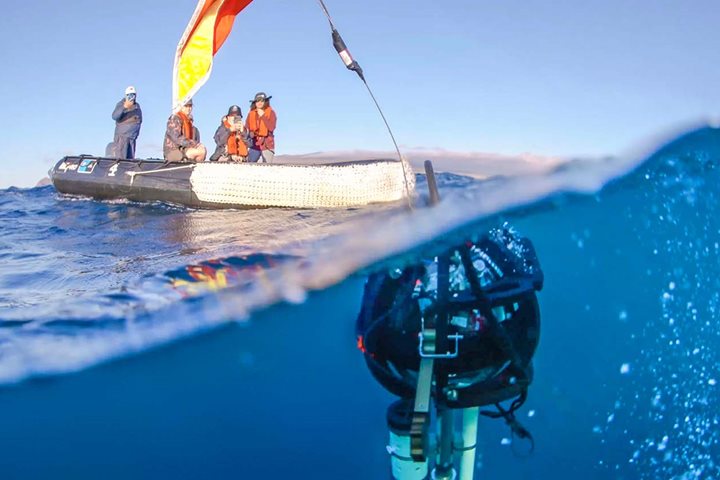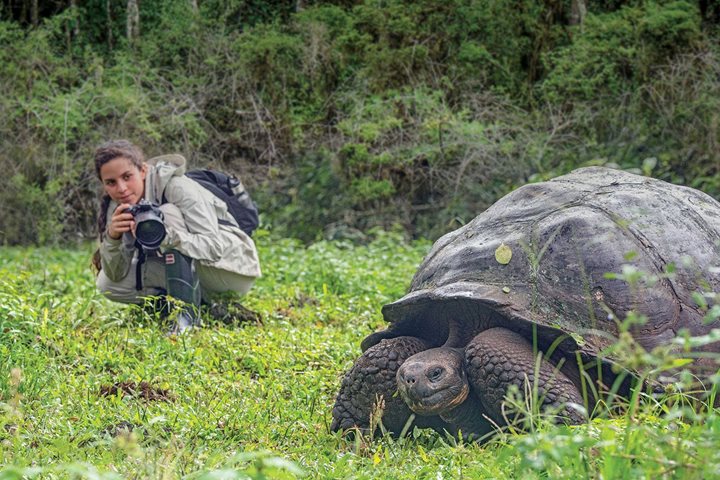Call +1300.361.012(AU) | 0800.444.462(NZ)
- WorldView
- 4 Min Read
- 3 Feb 2021
6 Surprising Things You Can See in Galápagos
Everyone knows the chief reasons you go to Galápagos—the legendary wildlife, the far-flung natural beauty, the rich scientific history. Travelers are drawn here every year to get up close to the iconic animals and follow in Darwin’s footsteps. But within these storied islands, there are some other surprising sights that make a trip to Galápagos even more exhilarating than you imagined. Here, just a few unexpected things you'll find. Get Inspired by Photos, Videos, Webinars, Stories, and Exclusive Offers. Sign Up
BROWSE GALÁPAGOS ITINERARIES >
The world's most unusual post office
In the aptly named Post Office Bay on Floreana Island, you can mail a postcard through one of the oldest informal postal systems in the world. These remote islands were a pit stop for 18th-century whalers traversing the oceans for months on end. As an ingenious way to send letters home, they erected a barrel on Floreana and left their mail for sailors on passing ships to deliver. Today, the tradition lives on! Drop your note (no stamp needed) into the historic barrel and future Galápagos travelers can sort through, find an address close to home and deliver your letter in person. For something extra fun, address one to yourself and wait for the unforgettable day it arrives on your doorstep!
A fantastic ocean blowhole that bursts up to 82 feet
Española Island, one of the oldest in the archipelago, teems with an array of diverse wildlife, from sea lions and marine iguanas to the incredible waved albatross breeding colony. But there’s another spectacle worth watching here—the Española blowhole. Hike the trail to the southern end of the island and from a cliff overlooking the ocean you’ll have a dramatic view of this geologic pageantry. Waves crash into a lava fissure, forcing the water to spout up to 82 feet in the air. If you’re lucky you’ll even be treated to a rainbow which sometimes appears in the sprayoff.
The Southern Cross and a remarkable starry sky
You’ve likely seen the Big Dipper, but have you ever witnessed the Southern Cross? The five stars that make up the constellation Crux can rarely be seen from the Northern Hemisphere, but you’re in prime viewing position in Galápagos. Even better: you have the rare opportunity to see the Dipper and the Cross at the same exact time—something that can only happen on the equator. In this remote part of the world, away from civilization, prepare to be transfixed by the enormity of the night sky and the cosmic show (stars, constellations, Magellanic clouds!) glittering overhead.
A spectacular sunlit rock formation
Photo: Ralph Lee Hopkins
Have your cameras ready for one of the most incredible photo ops of your Galápagos expedition. As the sun slowly sets, it lights up this spectacular rock formation off the coast of San Cristobal. Kicker Rock, named for its resemblance to a boot kicking a rock, is the remains of a volcanic “tuff cone” which eroded over eons into the shape you see today. Depending on how you view it, you may also see the form of a sleeping lion which earned the island its other name, Leon Dormido. You can decide for yourself as our ship sails lazily around the rock and we celebrate on deck with cocktails in hand until the sun has sunk well beneath the horizon.
Penguins on the equator
Imagine snorkeling alongside sea turtles and bright tropical fish when all of a sudden, a penguin zips past? That’s right: there’s a penguin that lives in Galápagos and it’s the northernmost penguin in the world. These endemic island dwellers are also the second smallest of the species. Unlike Antarctic penguins who have to protect their eggs from freezing, Galápagos penguins have to keep their eggs safe from overheating. So, you’ll find them along rocky shorelines making nests inside caves or cracks and crevices in the lava rocks.
An array of colorful sand beaches
It’s not just the wildlife that’s strange and unusual. Even the beaches in Galápagos are uniquely fascinating—from the red sands of Rabida Island, to the green-flecked shores of Punta Cormorant on Floreana, to the jet black beach of Puerto Egas on Santiago. And each comes with an equally interesting backstory which our naturalists will reveal as you explore each island. You’ll learn about the high levels of iron creating that rusty red hue or the olivine crystals that drift from nearby volcanic sites, creating one of only four green beaches in the whole world.



